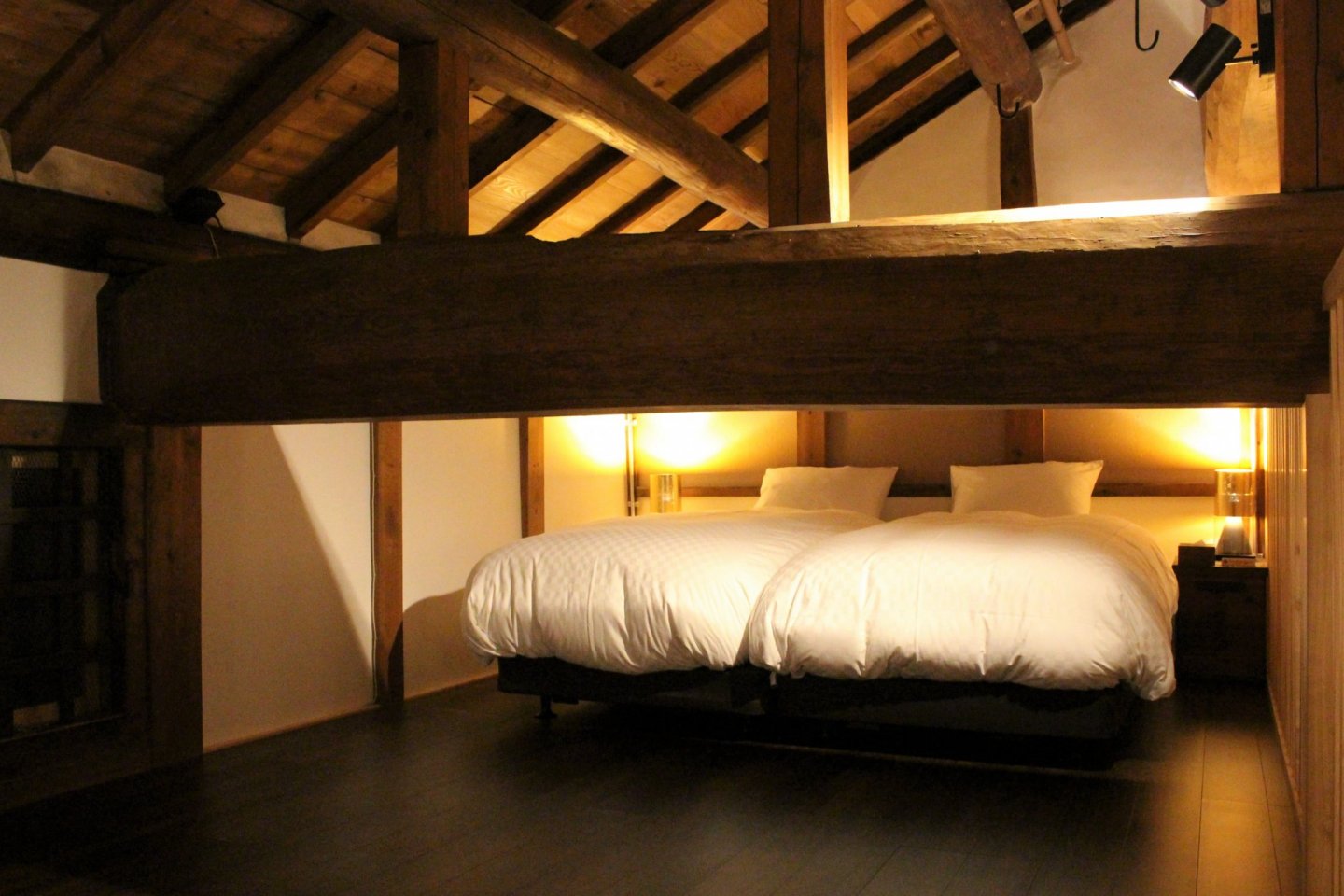It was a strange feeling, standing in front of the wooden inn. I felt as if I could see a merchant with the feudal chonmage topknot hairstyle popping his head out of the noren shop curtain at the entrance. Before my eyes was indeed the world of 1700s Japan, when people made a key Japanese seasoning in awe of nature deities: soy sauce.

NIPPONIA Tawaramoto Maruto Shoyu, a hotel transformed from a 130-year-old soy sauce warehouse, opened in the Tawaramoto district in the Japanese ancient capital of Nara in August 2020. The hotel has seven guest rooms, each around 40-65 square meters. The first floor of its four duplex rooms was once used for storing key soy sauce ingredients -- soybeans, wheat, salt and water -- while workers slept in the attic-like bedroom on the second floor.

“I tried to keep the renovation to a minimum so that much of the warehouse is utilized as it was,” says Hiroyuki Kimura, the 18th-generation to run the family’s soy-sauce making business. The hotel, however, offers great modern comfort as well. It has the latest air-conditioning system, and the bathroom is clean with well-arranged amenities. The floor heating system keeps the whole room pleasantly warm in winter.

Bringing alive the family's brand and the warehouse
Founded in 1689, Maruto was once a soy sauce supplier to Japan’s Imperial family but closed its business during the country’s difficult post-war period. “My grandfather did not talk much about the business he closed,” says Kimura. “One day, however, I happened to find his apron neatly folded in a drawer and became increasingly curious about what kind of soy sauce my ancestors had made.”

The turning point came when he discovered some very old documents in the warehouse that showed the recipe of his family’s soy sauce. Kimura worked for an apparel company at the time, but quit the job to embark on a path to revive the Maruto brand. Also, to his lucky surprise, Kimura found yeast that had been alive in the warehouse for over 70 years - the key to reproducing his family’s original soy sauce.
At the same time, Kimura started considering how to launch a tourism business utilizing the warehouse. “My grandfather would often tell me to do things that please people and our community,” he said. “I wanted to use the warehouse to offer visitors an experience only available here.”
Hospitality and Experience at Maruto
A stay at the inn begins with purifying the hands at the entrance with water, just as Japanese people do when they enter a sacred place at a shrine. A staff member gives you a warm welcome and takes you to a special room where guests are briefed on the hotel’s facilities and services, while having welcome tea with a Japanese sweet.
After checking in, you can have a tour to observe centuries-old soy sauce making equipment and try making soy sauce. The tour ends with sweet dumplings served with the soy sauce you have just squeezed out on your own from the moromi mixture of ingredients.

Cycling and strolling around the accommodation is also possible. The Tawaramoto district is part of an area once called “Yamato,” said to be the birthplace of Japan as the country’s first dynasty was established there. While having many historical sites, the district is far from touristy and is rather quiet. Ask staff members for tips on where to visit. They will show you places to visit, people to meet, and restaurants to have dinner that are only known to locals.

If you are an early bird, a morning tour in the neighborhood with Kimura serving as your guide is also available. The big, healthy breakfast using plenty of locally-produced fresh vegetables and seasonings tastes great, especially after a refreshing morning walk.

One of Kimura’s dreams came true when the hotel opened one year ago. He is now on course to realize his other goal of putting the Maruto brand soy sauce back in the market in 2022.
In pursuit of his goals, Kimura says that he has come to recognise and appreciate the great things and great people in the local community. “I would like guests to enjoy the whole community by chatting with locals and touching upon the Yamato culture and its history," he says.



































Koji yeast is a living thing. That’s amazing the yeast was waiting for Mr. Kimura.